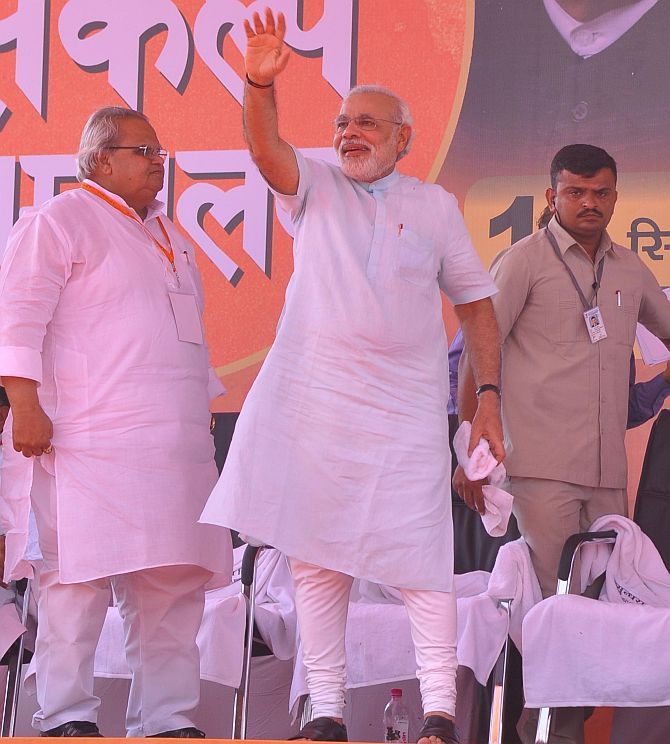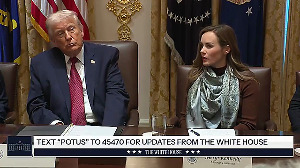 Psephologist Sandeep Shastri explains to Vicky Nanjappa/Rediff.com how Gujarat strongman Narendra Modi scripted the BJP's triumph.
Psephologist Sandeep Shastri explains to Vicky Nanjappa/Rediff.com how Gujarat strongman Narendra Modi scripted the BJP's triumph.
The victory is a combination of the nationwide disenchantment with the UPA (United Progressive Alliance) government and the Modi factor, which was channelised in a major way for the Bharatiya Janata Party especially in north-west India.
Both Bihar and Uttar Pradesh saw a prominent Modi surge considering that the BJP did not have a government in both these states.
One saw a similar phenomenon in Assam. At the beginning, all of us thought that there would be lukewarm response to the BJP in south-east India. The results, however, tell a different picture and although I would not call it a Modi wave in this part, I would say his presence helped the BJP.
In Uttar Pradesh, it was combination of multiple factors. The strong anti-UPA sentiment and disenchantment with the Akilesh Yadav government helped the BJP gain ground.
One must not forget the role played by Amit Shah (the BJP general secretary in charge of Uttar Pradesh). Besides playing the soft Hindu card, his presence propped up the ground-level campaign.
Modi's visits to UP where he promised the electorate a Gujarat model of development helped the BJP reach out to the average voter who felt betrayed by two decades of Samajwadi Party and Bahujan Samajwadi Party governance.
In the south, Karnataka was the icing of the cake for the BJP. Not many expected that the BJP would get 17 out of 28 seats.
The Modi factor has worked wonders for the BJP in urban Karnataka. Putting up a smart campaign, all candidates, many of whom were sitting MPs, banked on the Modi factor while hitting out at the UPA government.
As told to Vicky Nanjappa/Rediff.com
Image: Narendra Modi at a rally in Jaipur. Photograph: Rohit Jain Paras










